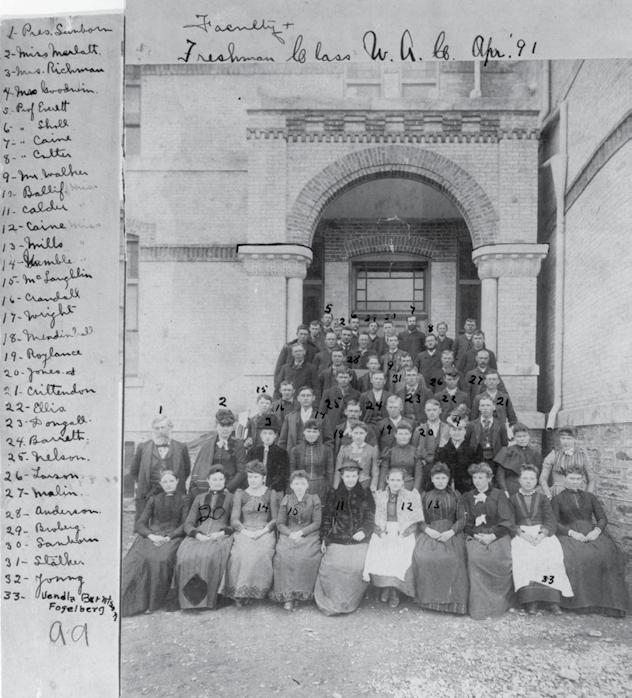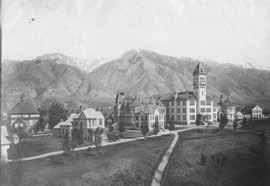
3 minute read
leGACy
In 1890 on the first day of classes at Utah State University, eight out of the 15 total students were business majors, working toward a two-year degree
in commerce and business. Thus the first graduating class had more business majors than all other majors combined.
At that point, the only four-year business school in the United States was the Wharton School of Commerce and Finance, at the University of Pennsylvania, that had opened its doors nine years earlier, in 1881.
Utah State started a four-year business curriculum in 1893, but it wasn’t organized as an independent school of business culminating in a Bachelor of Science degree until 1903. By then the University of California had launched a four-year business program, starting in 1898, making Utah State officially the second school west of the Mississippi with a four-year business degree—even though actually it was the first.
Utah State archivist Bob Parson said that while the business major was originally a two-year program, all eight of the original business majors graduated with a four-year degree from the university in 1894. That first class of business majors included:
Another “first” for Utah State was that it offered the first college accounting courses in the state of Utah, as reported by Carol Lundgren in her history of the first 100 years of the College of Business. In addition, by 1918 there were 200 women majoring in business at Utah State.
From its founding, the business department was differentiated from most other business departments in the U.S. by its inclusion of social sciences elements in its curriculum. These included courses in economics, sociology, comparative study of governments, civil government, American diplomacy, and rural sociology. It wasn’t until after 1969 that a separate College of Humanities, Arts and Social Sciences was established.

Faculty and Freshman Class at Utah State in 1891
USU
Ernest John Froberg Byron Blanchard John Alvin Crockett Joseph Geerston Fields Thexton Ingalls John Albistus Malia Alpheous Oresta Packard Isaac Perry Stewart


Office of the Dean 3500 Old Main Hill Logan, UT 84322-3500
This year’s required reading is the book “Give and Take” by Adam Grant, the highest-rated teacher at University of Pennsylvania’s Wharton School and its youngest tenured professor.
His book, described as a “revolutionary approach to success,” says that people fall into three categories: “takers,” “givers,” and “matchers.” He said takers are always focused on getting as much as they can from other people. Matchers are those who give, when others are willing to do the same for them.
Givers, he said, are a “rare breed” who instinctively give to others without expecting anything in return. Dr. Grant explains that while some givers end up being exploited and burning out, others achieve “extraordinary success.” Dr. Grant writes about what he has discovered about why some givers struggle and others succeed.
“To figure out why givers dominate at the top of the success ladder, we’ll examine startling studies and stories that illuminate how giving can be more powerful – and less dangerous – than most people believe,” he writes.
He said that while there are successful people in all three categories, he’s discovered that when “takers” win someone else tends to lose. When “givers” succeed, “it spreads and cascades.”

RequiRed Reading Give and Take by Adam Grant
Non-Profit Org uS postage pAid utah State university








